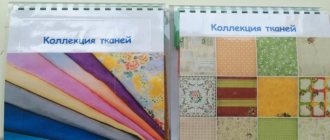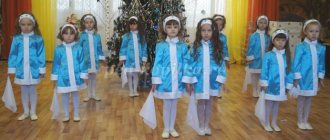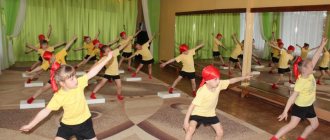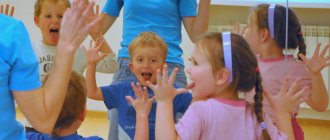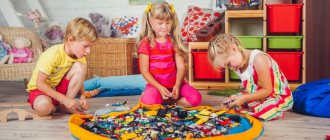Name:
Pas (French) - step
Marcher (French) - walk, go, step; walk, move
Pas marché (on the march) is an easy dance step.
The dance step is the basis of all classical ballroom dancing. This is a step where the foot is placed on the floor with the toe extended across the entire foot.
Music
The dance step can be performed in different musical sizes (2/4, 3/4, 4/4) and at different tempos.
Initial position
The dancers stand in a circle, facing along the line of dance.
Legs – in 1 or 3 poses. (right leg in front).
Hands are in the ball position.
Score: And-1-And-2
| Check | Description of movement |
| Zatakt (I) | Move your right foot forward onto your toe - battement tendu - battman tandu with your right foot forward. The supporting left leg softens slightly at the knee. |
| 1 | Take a small dance step with your right foot forward: - slightly raise the toe of your right foot above the floor - step with your toe on the ball of your right foot - move to the entire foot - place the heel of your right foot on the floor - stand on your right leg, transfer your body weight to it (the left leg remains on the back of the toe, without weight) |
| AND | The supporting right leg softens slightly at the knee. The left leg, also slightly softened at the knee, is carried through 1 pose with a sliding movement. and is brought forward onto the toe. |
| 2 | Take a small dance step with your left foot forward: - slightly raise the toe of your left foot above the floor - step with your toe on the ball of your left foot - move to the entire foot - place the heel of your left foot on the floor - stand on your left leg, transfer your body weight to it (the right leg remains on the back of the toe, without weight) |
Then repeat the movement again with the right leg.
A Brief History of Modern Dance Steps
Modern dance was developed by famous pioneers Martha Graham, Paul Taylor and Isadora Duncan, to name a few. These classically trained dancers shared the same sensibilities as dances that could be enjoyed outside the confines of rigid ballet. Modern dance was created to show emotion and the more "human" side of the art, a striking contrast to the strict rules and regulations of ballet, which was the most popular style of dance in America at the time.
Modern dance steps continue to evolve with every dancer who is inspired enough to create, and the style will only grow with future generations.
Notes
- Item name:
- Dance steps should be light, smooth and small.
- When the heel lowers to the floor, the knee of the supporting leg softens slightly.
- The transfer of body weight from one leg to the other should be smooth and imperceptible.
- Make sure your feet are turned out and your toes are pointed.
- All steps are performed along the same line.
Pas (French) - step
Marcher (French) - walk, go, step; walk, move
Pas marché (Pa marché) - dance walking, light dance step.
Modern dance steps
When you take a modern dance class, the technique you learn will depend on the teacher's preference. Since it is such an emotion-based dance genre, students can learn great variations of the craft by studying under different instructors. However, there are some moves and choreography that are consistent across studios, and these modern steps can be easily mastered.
Roll up and down
Starting in the first jazz position (feet parallel to the front), with your hands at your sides and your gaze focused downwards, slowly curl your spine, being careful not to collapse at your waist. When you are halfway to the floor, bend your knees and continue to curl. Your instructor may tell you to roll up one vertebra at a time and then "grow back up" again with one part of your spine at a time.
Foot swing
Standing parallel again, place your hands in the second position. With his right leg spread forward with the pointed toe, he should then work his way through the first position and follow it back with a slight tilt of the knee. This is often used as a transition movement in a choreography combination.
Flat back
It sounds simple enough, but a flat back done properly requires a lot of discipline and flexibility. Once you've bent over, keeping your back as straight as possible, raise your arms to fifth with your palms facing inward. Raise your torso back, simultaneously with your arms, as one fluid movement. This move is a wonderful exhibition of grace and bodily control, almost derived from its ancestor's ballet.
tendu
With tendis, the leg is first directed forward and back in parallel. You can then repeat the position to the side and back, alternating in rhythm. This is usually a floor exercise, but can also be used in routines.
Shas
An hour is a simple jump often found in modern dance. Standing with your weight on one leg, you change your weight while on a plane and then jump so that both legs are vertical together in the air. You can move around the room with this movement and add height and back for a more advanced look.
Boundless
The general rule is that all modern dance steps are essentially derived from something else. Whether it's classical ballet or a tree outside the window on an exceptionally windy day, modern dancers find sources of choreography in every single movement they observe in life, and the ability to do it amazingly.
If you're pursuing contemporary dance as a career or hobby, don't be afraid to create dance steps out of thin air, as the results can be nothing short of amazing and definitely rewarding.
Methods of learning dance elements with children
In the process of mastering dance material, we conventionally distinguish three stages.
At the 1st stage (the beginning of using musical and rhythmic compositions in working with children), we rely on children’s ability to imitate, which is clearly expressed in preschool age. By imitating an adult, a child easily masters various types of movements and gradually begins to use them in independent activities (in games, dance improvisations).
The 2nd stage of training (after the children have already acquired some experience in performing as shown and have memorized several compositions) promotes the development in children of the ability to independently perform previously learned exercises (compositions as a whole and individual movements).
The 3rd stage of work is leading children to a creative interpretation of a piece of music, developing the ability to express themselves in movement to music, developing the ability to independently select and combine familiar movements and come up with their own, original exercises. The implementation of these tasks is most important in this program, since it is in the development of creativity and the ability to improvise that the main idea is concentrated - control of one’s own body, subtlety of musical perception, non-standard thinking, psychological freedom.
We approach each stage sequentially, but at the same time, they can be combined simultaneously (but with different repertoires).
Let us consider in more detail the methodology for organizing the pedagogical process at each stage:
The basis of the 1st stage of training is imitation of the teacher’s model of movement execution in the process of joint activity. / “Involving demonstration” (an expression by S.D. Rudneva) helps children master quite complex motor exercises. Performing movements together helps create a general high spirits; a single rhythmic breathing accompanied by music regulates psychophysiological processes and concentrates attention as much as possible. In such group rhythm classes, the students are exposed to a sort of hypnotic effect, the strength of which depends on the music and on how expressive and artistic the teacher’s display is. There is one more feature in the show - it must be “advanced”, that is, the movements are ahead of the music by a split second. This is necessary so that children have time to “translate” visual perception into a motor reaction. In other words, it takes time for the visual signals to reflect and then the muscle sensations will exactly coincide with the sound of the music. If such an advance in the demonstration does not occur, then the children’s movements (reflecting the teacher’s demonstration) are always slightly behind in relation to the music, which complicates the formation of musical-rhythmic skills.
There is one more feature of such a display - it must be given in a “mirror” reflection, since children repeat all movements automatically. In the process of imitation, children more easily develop a variety of motor skills and abilities. Thanks to “involving demonstration”, children cope with exercises that they could not do independently or with fragmentary demonstration with verbal explanations. However, the degree of complexity of motor exercises that children can perform in the process of imitation is not unlimited. To determine it, the teacher must determine the “immediate zone” of the child’s development (according to L.S. Vygotsky), which allows us to foresee the next step in his development. In the process of joint performance, it is important to let children feel their capabilities and consolidate them in their minds. With subsequent repetitions, the movements are refined, memorized and automated. Of course, this happens differently in children - for some it’s faster and easier, for others it’s slower, with some peculiarity. It is important that the teacher does not make any comments (at this stage of work), does not focus the children’s attention on the fact that they are not doing something well, and then gradually the complex elements of the exercises, repeated in various compositions, will be mastered.
The next stage of classes is the development of children’s This happens gradually, as if unnoticed by those involved. The teacher from time to time stops the demonstration during the joint performance and invites the children to continue performing the movements independently. This is a very important point, since in the case of performance only for show, children do not train voluntary attention, memory, and will. After several repetitions, together with the teacher, the children are invited to perform the entire composition independently from beginning to end (sometimes you can prompt with some gestures).
At this stage the following techniques are used:
— demonstration of performance of compositions by children (choice of presenters instead of teacher - in turn or at will);
- demonstrating the exercise with conventional gestures and facial expressions;
— verbal instructions;
— “provocations,” that is, the teacher’s special mistakes when showing them in order to activate children’s attention and encourage them to notice and correct the mistake.
Not all compositions should be learned with children to the level of independent performance from memory. Our task is to accumulate motor experience, develop skills and abilities, and for this we need to move a lot (to achieve automaticity, that is, skill), and we consider this stage of work as intensive training. However, some compositions that are convenient for inclusion in entertainment, matinees, dramatization games (spectacular, “spectacular”) can be learned with children for the purpose of subsequent performance (for example, these include: “Magic Flower”, “Squirrel”, “Exercise with hoops”, etc.). In this case, more careful work is carried out on the quality of performance, since it is important to cultivate in children a sense of beauty, a culture of movement, and the desire to do everything with full dedication. Thus, in parallel, there are two levels in working on compositions - “training”, performance for show (without carefully practicing movements) and leading children to independence, expressiveness in the execution of movements on individual compositions (accessible to the individual capabilities of children) with the aim of educating and developing the child’s personality . Independent performance of exercises indicates the development of motor skills, is an indicator of the learning outcome, as well as an indicator of the level of development of the most important mental processes - will, voluntary attention, musical and motor memory.
Next, based on the development of children’s plastic capabilities and expansion of their motor experience, we move on to the third stage, creative self-expression in movement to music. This also happens gradually. Thus, some compositions immediately include a “question-and-answer” form of performance, where improvisation on a certain musical fragment is assumed - bridge, chorus, etc. For example, in the composition “Dance while sitting”, children themselves come up with general developmental exercises to lose, in order to lose in the composition “The Three Little Pigs” - the Piglet dance, etc. Such small inclusions, on the one hand, train attention switching and the development of voluntary movements, and on the other hand, they prepare for improvisation on complete musical works.
Next, we move on to simple creative tasks, which include dramatizing songs. For example, in the song “Two Rams” (music by M. Kozlov), children perform movements in roles based on the text (in the form of two rams - White and Black), and in the dramatization of the song “Reckoning”, children depict the dialogue between a Girl and a Cat. For such tasks, songs with a bright, dynamic plot are selected that encourage movement (“Cats and Mouse”, “Plastic Crow” by Gr. Gladkov, “We Divide Everything in Half” by V. Shainsky, etc.).
The process of improvisation and playing songs is longer than just learning. So, first, children are asked to listen to a song, pronounce the text, then play “tests” in which children try to express the content of the song in movements. The role of the teacher is to observe the children’s manifestations, support them, in no case intercept their initiative and help in the selection of figurative movements and the design of a holistic composition. Older preschoolers and younger schoolchildren may be offered more complex tasks - for example, plastic improvisations on classical music (see the Appendix for the script of the suite to the music of M. Mussorgsky “Pictures at an Exhibition”) or composing fairy tales, “ballets”, etc. (See the Appendix for “Fairy Tales” that the children composed themselves and came up with dances included in the production).
At this stage of work, you can use the following methodological techniques:
• listening to music and talking about it; drawing, verbal descriptions of musical images;
• selection of poems, fairy tales and other works that help interpret the musical image;
• plastic improvisations of children, “tests” - without showing the teacher;
• demonstration of movement options by the teacher - children are asked to choose the most successful one.
Adults only occasionally join in the movement to stimulate children's activity. As a rule, such a need arises in connection with the design of movements invented by children into a single composition, since this task is still difficult for preschoolers and primary schoolchildren (and it is not easy for adults either!).
The most convenient way to develop children’s dance and play creativity, in our opinion, is the staging of popular fairy tales, such as “The Fly Tsokotukha” by K. Chukovsky, “The Cat’s House,” “12 Months” by S. Marshak, etc.7.
Summarizing what has been said, we emphasize that improvisation in both children and adults is possible only on the basis of the development of an ear for music, creative imagination, as well as on the basis of free control of one’s body, that is, when the movements are automated and do not distract attention to the technique of their execution . Jacques-Dalcroze also believed: “When everything related to rhythm and technique passes into the category of automatic, all attention will be freed up to convey the feeling
"2.
Therefore, if we want to achieve a truly artistic, and not a primitive interpretation of musical works in plastic, a lot of and meticulous work on motor skills is necessary. But the process of this technical work must also be engaging, playful and creative. And then children will develop, learn movements easily and involuntarily, unnoticed by themselves, mastering various and complex motor combinations.
And this in turn will stimulate their overall development. 2. Development of children in the process of mastering various types of movements.
Moving from simple to complex, at the beginning of work with younger preschoolers, attention is paid to mastering figurative play movements. These same exercises begin the development of motor qualities - plasticity, agility, etc., as well as motor skills. For example, such game exercises as “Bunny”, “Squirrel”, “Ball” - train the ability to easily jump on two legs; “Fox” is a “soft”, springy walk; “The ball rolled” - run; “Ball” - jumping on two legs; “Bear” - walking, waddling from one foot to the other, walking on all fours, lying on your back, clasping your legs with your arms, bent at the knees - rolling from side to side”; “Doggy” - walking on all fours, running; “Kitty” - standing on all fours, arching and arching your back (developing flexibility), etc.
These movements can be offered without music, in a game or when playing out poems, as well as in compositions (from the repertoire “RiTeddy Bear”, “Squirrel”, “Ball”, etc.).
Mastering figurative play exercises not only develops plasticity, expressiveness, movements, but also trains dexterity and accuracy, coordination; and, what is very important, they develop children’s imagination, their emotions, the ability to “revive” a game character, animal, toy, etc. For younger preschoolers, based on play exercises, all other types of movements are introduced - general developmental, basic, dance movements. Forming in pairs, one after another, in a circle is also best done in the process of learning games, dances, round dances, where these formations are logical and natural, and the children’s attention is concentrated and regulated by music.
To make it easier for children to change lanes while moving, you can also use visual references - the pattern of the carpet, the furniture in the room, the location of windows, walls, etc. In this case, it is important to correctly indicate the direction of movement - “right”, “left”, “forward” “Back” - that is, to connect the “muscular feeling” of the direction of movement and the word (that is, the 1st and 2nd signal systems - the basis for the formation of a skill according to I.P. Pavlov). You can also use the modeling method - lay out various dance figures and a sequence of changes on a flannelgraph or on a table (this technique is more used with older children).
Thus, the formation of the ability to navigate “on oneself” (right-left arm, leg), “from oneself” (right, left, forward, backward) is laid down in early preschool age and continues in subsequent years.
Literature
- « Ballroom dance XVI - XIX centuries.
". Ivanovsky N.P. Edited by Yu.I. Slonimsky. Moscow-Leningrad, ed. Art, 1948 - " Ballroom dancing"
Sarikojumu dejas. Lasman Milda. Publishing house Latvias Valsts Izdevnieciba, Riga (Riga), 1954 - " Dance"
Textbook for theater universities (on stage dance). Vasilyeva E.D. M., Art, 1968 - " Rhythm at school, third lesson of physical education."
Educational and methodological manual. J.E. Firileva, A.I. Ryabchikov, O.V. Zagryadskaya, Rostov-on-Don “Phoenix”, 2014
